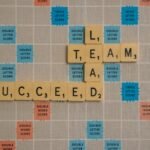Succession Planning and Career Development: Investing in Future Leadership
In today’s fast-paced business landscape, organizations must be proactive in preparing for the future. Succession planning and career development play a vital role in ensuring a steady pipeline of talented individuals who can step into key roles and drive organizational success. By investing in these processes, companies not only secure their future leadership but also foster employee engagement and retention. In this blog post, we will delve into the importance of succession planning and career development, and explore strategies to implement them effectively.
Understanding Succession Planning Succession planning involves identifying and nurturing potential leaders within an organization to fill critical positions in the future. It goes beyond mere replacement planning and focuses on developing a pool of talented individuals who possess the necessary skills and competencies to drive the organization forward. Benefits of Succession Planning 2.1 Continuity: Succession planning ensures continuity by minimizing disruptions caused by sudden vacancies in key positions.
Organizations that have well-defined succession plans are better equipped to handle unexpected departures and maintain operational stability. 2.2 Talent Development: Succession planning acts as a catalyst for talent development. By identifying high-potential employees and providing them with growth opportunities, organizations create a culture of continuous learning and development. 2.3 Employee Engagement and Retention: When employees see a clear path for advancement and growth within the organization, they are more likely to be engaged and committed. Succession planning sends a powerful message that the company values its employees and invests in their long-term career progression. Implementing Effective Succession Planning 3.1 Identifying Key Roles: Begin by identifying critical positions within the organization that require succession planning.
These roles may vary based on the organization’s strategic objectives, industry, and future needs. 3.2 Talent Assessment: Evaluate employees’ potential and performance to determine their readiness for future leadership roles. Assessments can include performance reviews, skills assessments, and feedback from supervisors and peers. 3.
Development Plans: Create tailored development plans for high-potential employees, focusing on closing skill gaps and providing opportunities for growth. This may involve job rotations, mentoring programs, leadership training, and stretch assignments. 3.4 Knowledge Transfer: Encourage knowledge sharing and mentorship between current leaders and potential successors. This ensures the transfer of critical institutional knowledge and helps successors gain valuable insights from experienced professionals. Career Development: Empowering Employees for Growth 4.
Individual Development Plans: Encourage employees to create individual development plans that align with their career aspirations and the organization’s goals. These plans should include specific objectives, skill development opportunities, and timelines. 4.2 Training and Upskilling: Offer a range of training programs, both technical and soft skills, to enhance employees’ capabilities and broaden their expertise. This can include workshops, online courses, seminars, and conferences. 4.
Mentoring and Coaching: Implement mentoring and coaching programs to provide guidance and support to employees throughout their career journeys. Seasoned professionals can share insights, offer advice, and help employees navigate challenges. 4.4 Performance Feedback: Regularly provide constructive feedback to employees, emphasizing areas for improvement and recognizing their achievements. This feedback loop helps individuals understand their development needs and motivates them to excel.
Conclusion Succession planning and career development are not just buzzwords; they are critical strategies for organizations that aim to thrive in a competitive marketplace. By investing in identifying and developing future leaders, companies ensure continuity, foster employee engagement, and drive organizational growth. Effective succession planning and career development programs empower employees, enabling them to reach their full potential while securing the organization’s future success. Embrace these strategies, and your organization will be well-positioned to face the challenges and opportunities that lie ahead.

































